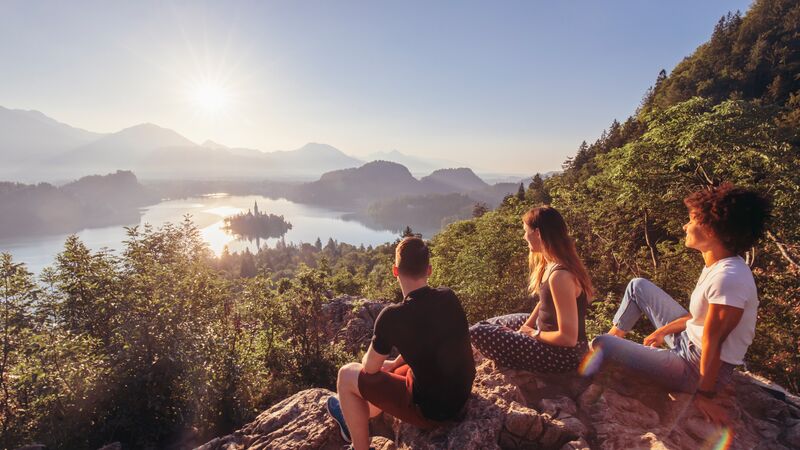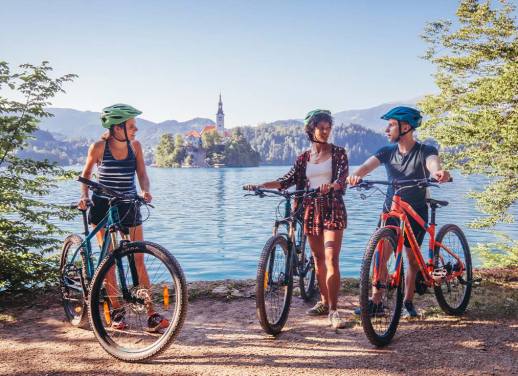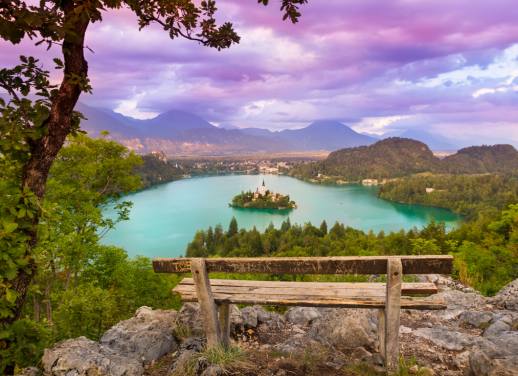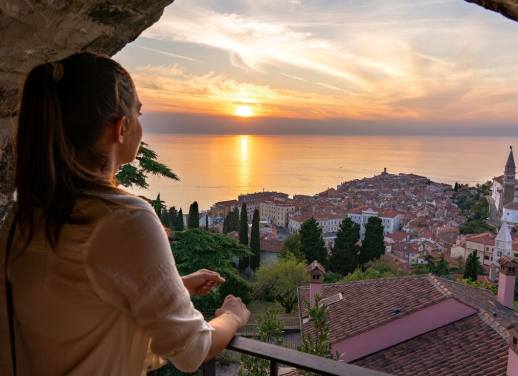Sure, the guidebooks will all tell you that Slovenia is a country wedged between the Alps and the Adriatic, compact in size but big on adventure. But here we reveal its lesser-known secrets.
Of course, you will have seen the glassine image of Lake Bled gracing enticing book covers. And the historic capital of Ljubljana, with its red-roofed Old Town buildings hugging the banks of the city’s titular river. But have you heard about Lake Bled’s creamy kremsnita cake? Or had your interest piqued by Ljubljana’s artsy army-barracks-turned-creative-hub, the Metelkova district?
Despite its diminutive size, the country is also home to a surprisingly vast range of karst-cave systems that stretch on for miles, as well as glacial rapids that both beginners and experts can raft down and even vineyards that host the world’s oldest living grapevine still producing fruit annually, according to official records. Here are eight things you might not know about Slovenia.

1. It’s perfect for an adventure holiday
Mountains, rivers, forests, gorges – Slovenia has plenty of al fresco adventures. Hike to Mt Vogel in the southern Julian Alps, raft the glacial waters of the Soca River or bike through the vine-dotted hills of Brda. And the best part? It’s small enough to do all the above in a single trip.
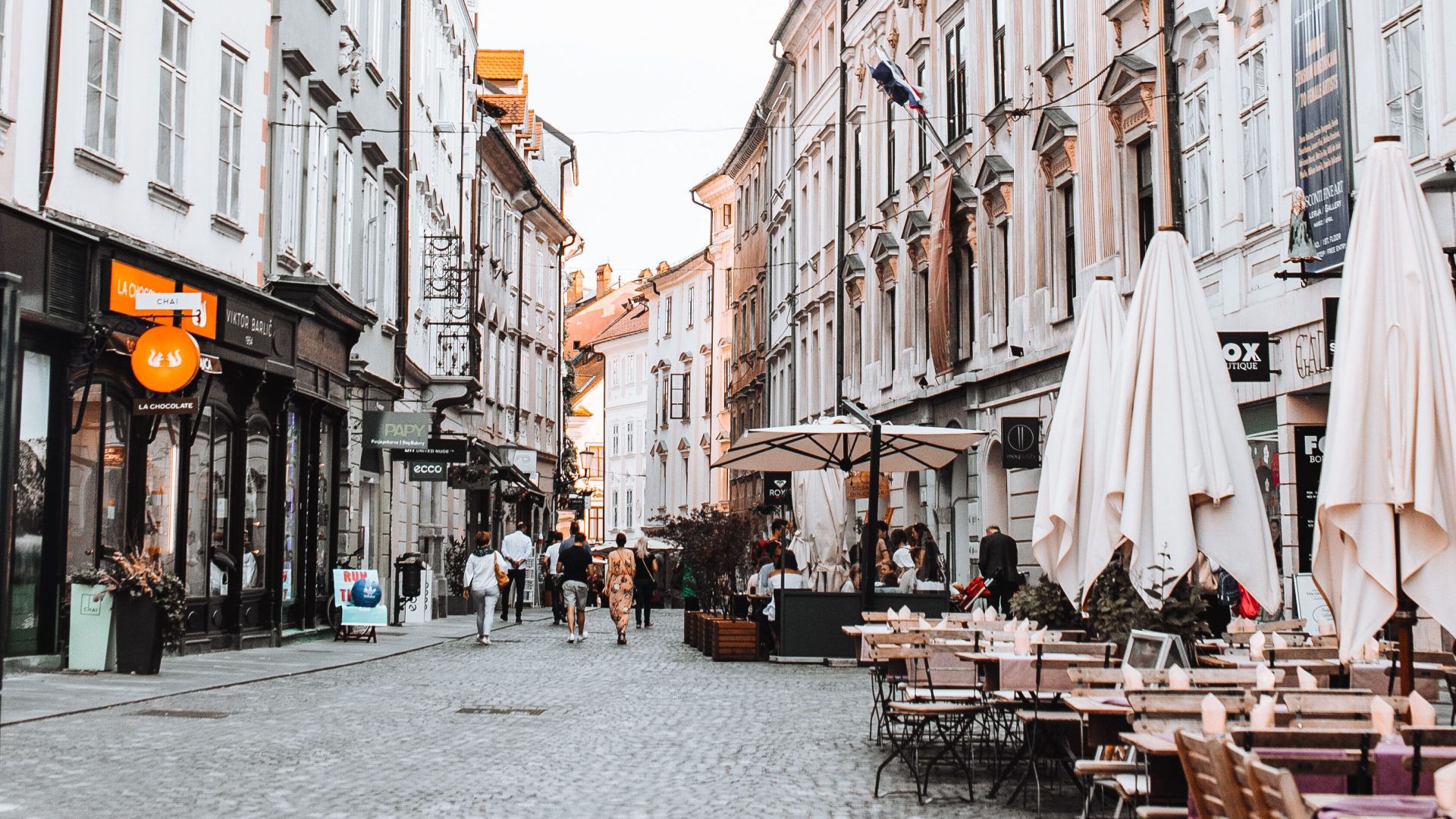
2. It has a mix of cultural influences
Slovenia offers a taste of eastern Europe with a modern Mediterranean sensibility. It was part of the Yugoslavia until gaining independence in 1991 and became the first former Communist country to adopt the Euro in 2007. In Ljubljana, you can still see remnants of its Communist past in the concrete apartment blocks and public squares, but on the whole, the vibe is more espresso-sipping-in-the-sunshine.
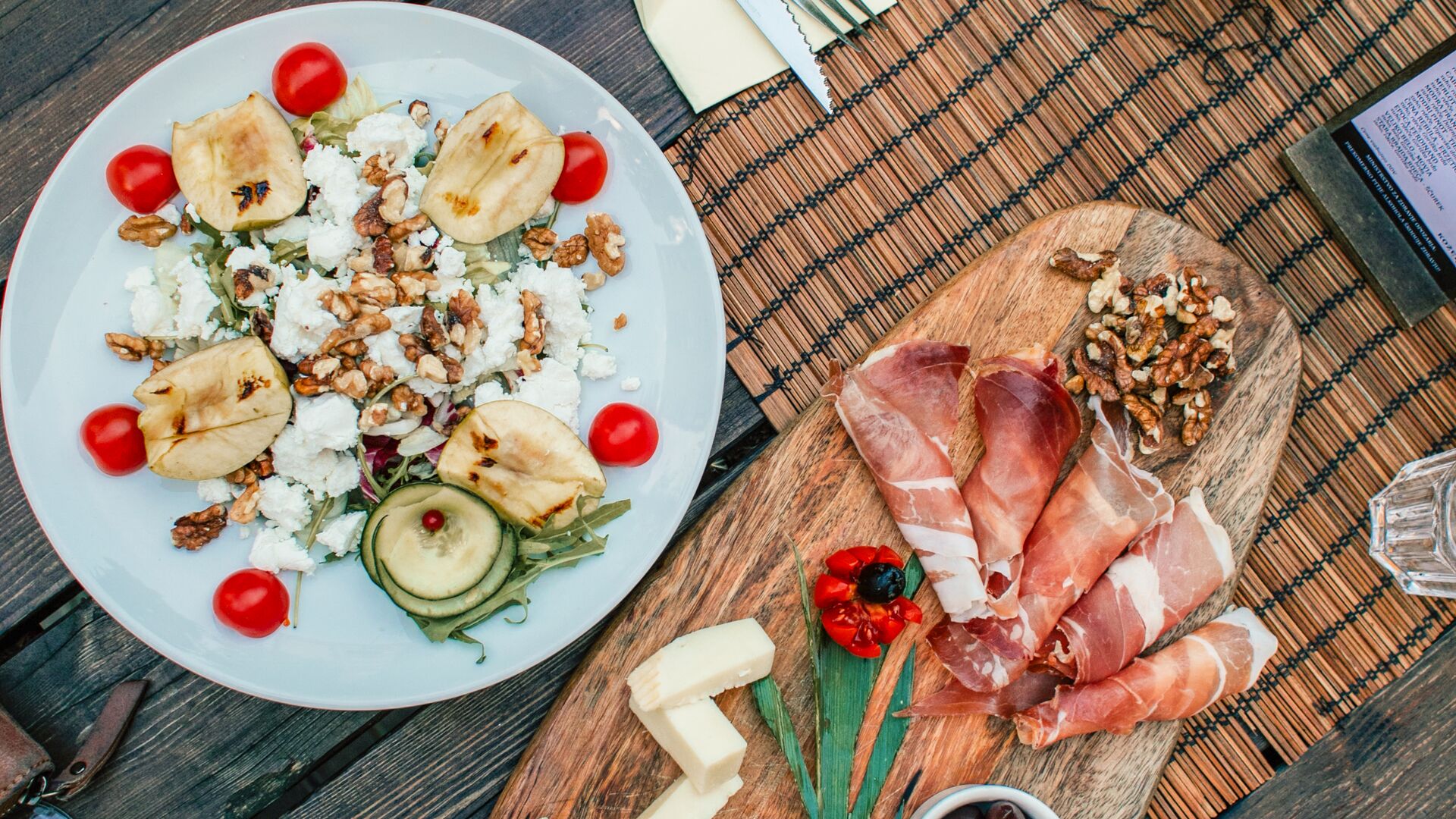
3. The foodie scene is strong
Slovenia might be small, but its food scene isn’t – with 24 gastronomic regions and many distinct dishes.
Feeling peckish in the afternoon? Go for a classic plate of Slovenian cold cuts and cheese – ideally with a frothy beer. For something heartier, try struklji (rolled dumplings filled with potato and herbs) or Carniolan sausage with sour cabbage and crusty bread.
But whatever you do, leave room for a slice of kremsnita, especially in Lake Bled, where this delicious custard and vanilla cream cake was born.
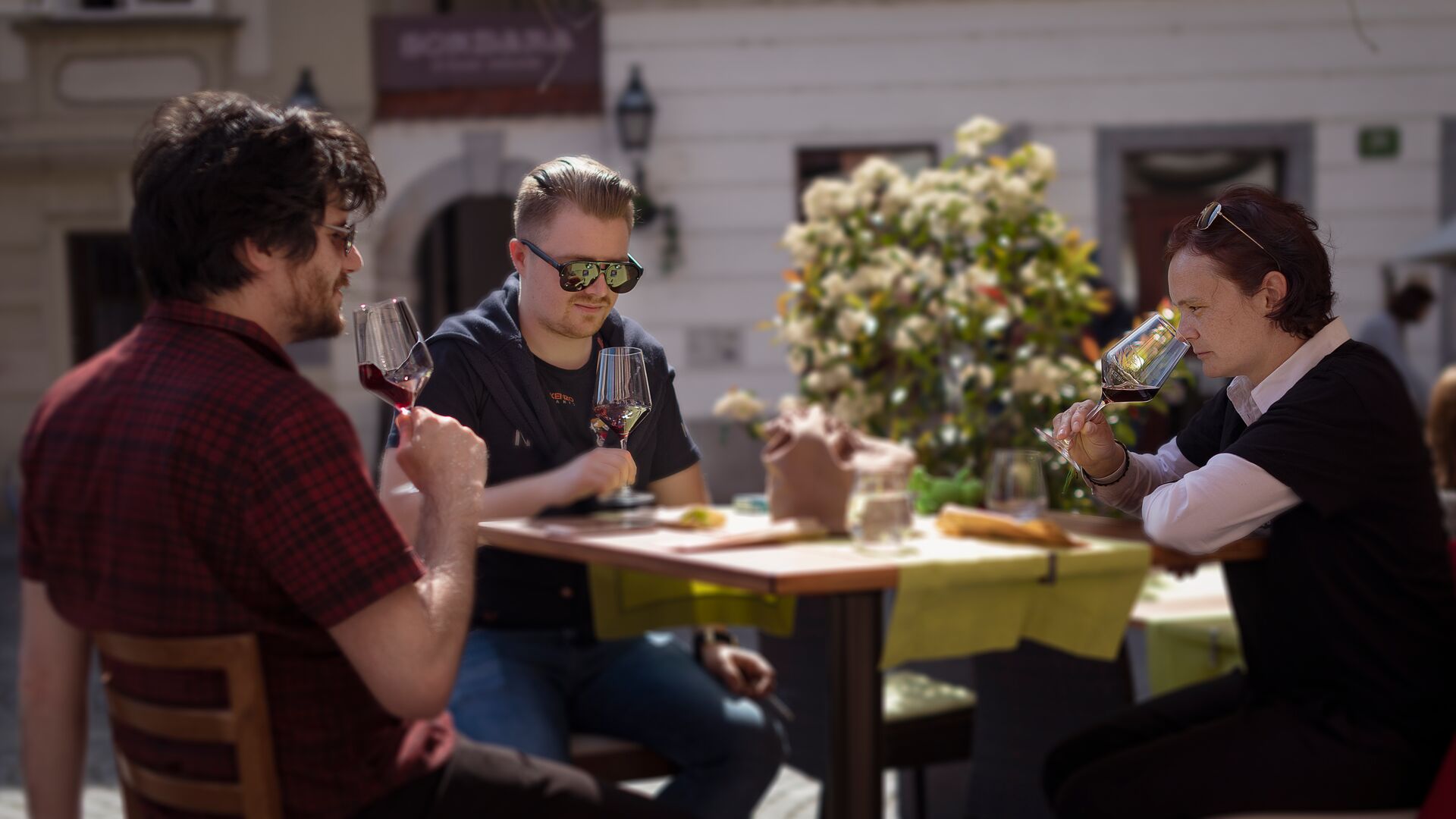
4. Slovenian wine is a big deal
There’s a vineyard for roughly every 70 people in Slovenia. That’s a lot of wine – and most of it stays in the country.
There are three main wine regions. Podravska, near the Hungarian and Croatian borders, is known for its sparkling whites and dessert wines. Posavska, in the southeast, produces light red varieties, while Primorska, the most famous, is all about bold reds and fruity whites, influenced by Italy just next door.
Oh, and one of the world’s oldest vines – over 400 years old – grows in Maribor, Slovenia’s second-largest city.
5. Street art is loud and proud
Slovenia’s cities, especially Ljubljana, have a long reputation of creative resistance on issues ranging from LGBTQIA+ rights to anti-war activism. As you walk around, you’ll stumble on brightly patterned umbrellas hanging over streetlights, thousands of pairs of shoes draped over powerlines and neon-pink park benches.
Ljubljana’s Metelkova district – a former army barracks turned creative hub – is particularly vibrant, with a large artist population, installations, sculptures and a renowned nightlife scene.

6. Lake Bled may be the prettiest lake, like, ever
Lake Bled is the postcard image of Slovenia. And rightly so – with blue-green water, a forested mountain backdrop and a naturally formed island in the middle, topped b a 17th-century church.
Rent a rowboat and glide out to the island to visit the church, then grab a coffee and a slab of the famous kremsnita cake by the water.
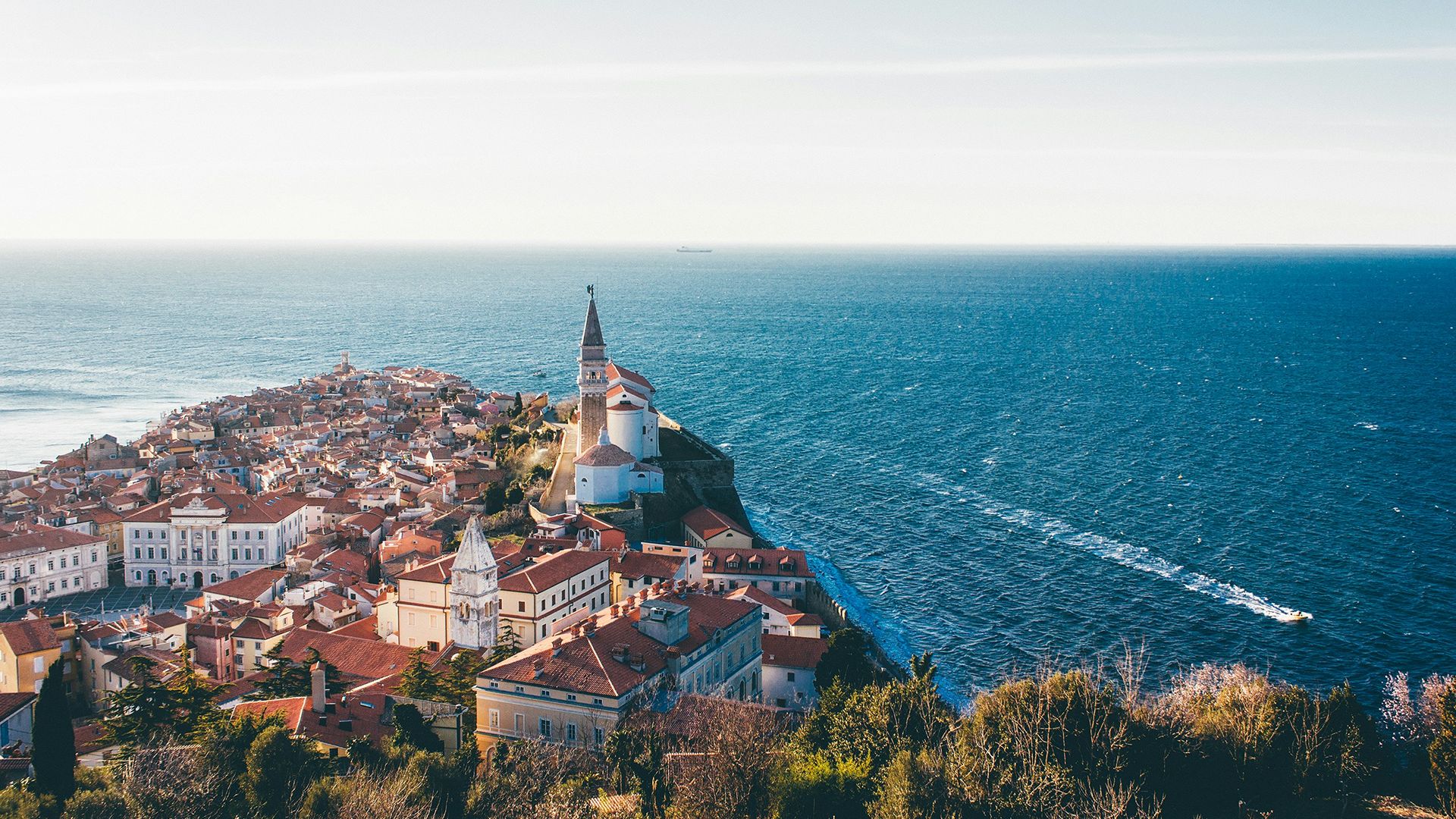
7. You can have a less-crowded beach holiday
Slovenia’s 46 km coastline shares similarities with the Italian Riviera (think yachts, gelato, cobblestone lanes and gorgeous Adriatic waters), but without the masses. It still gets busy in the summer, but it’s generally more laidback than its Mediterranean neighbours.
The southwestern Adriatic town of Piran is a great spot to launch your coastal adventure. Once part of the Venetian empire, the Old Town has kept much of its historic charm, with a lively square and narrow lanes you could spend hours exploring.
8. It has thousands of caves
Like caves? Slovenia has over 14000 of them. The most famous is the UNESCO-listed Postojna, a 20 km karst cavern filled with eerie rock formations, stalactite-hung tunnels and unique wildlife. Look out for the elusive cave-dwelling olm – or blind salamander – which has adapted to total darkness, thanks to its enhanced senses of smell and hearing.
Want to get even more clued-up on Slovenia? Experience the country with Intrepid on a small-group adventure.
This article was originally published in September 2018.

